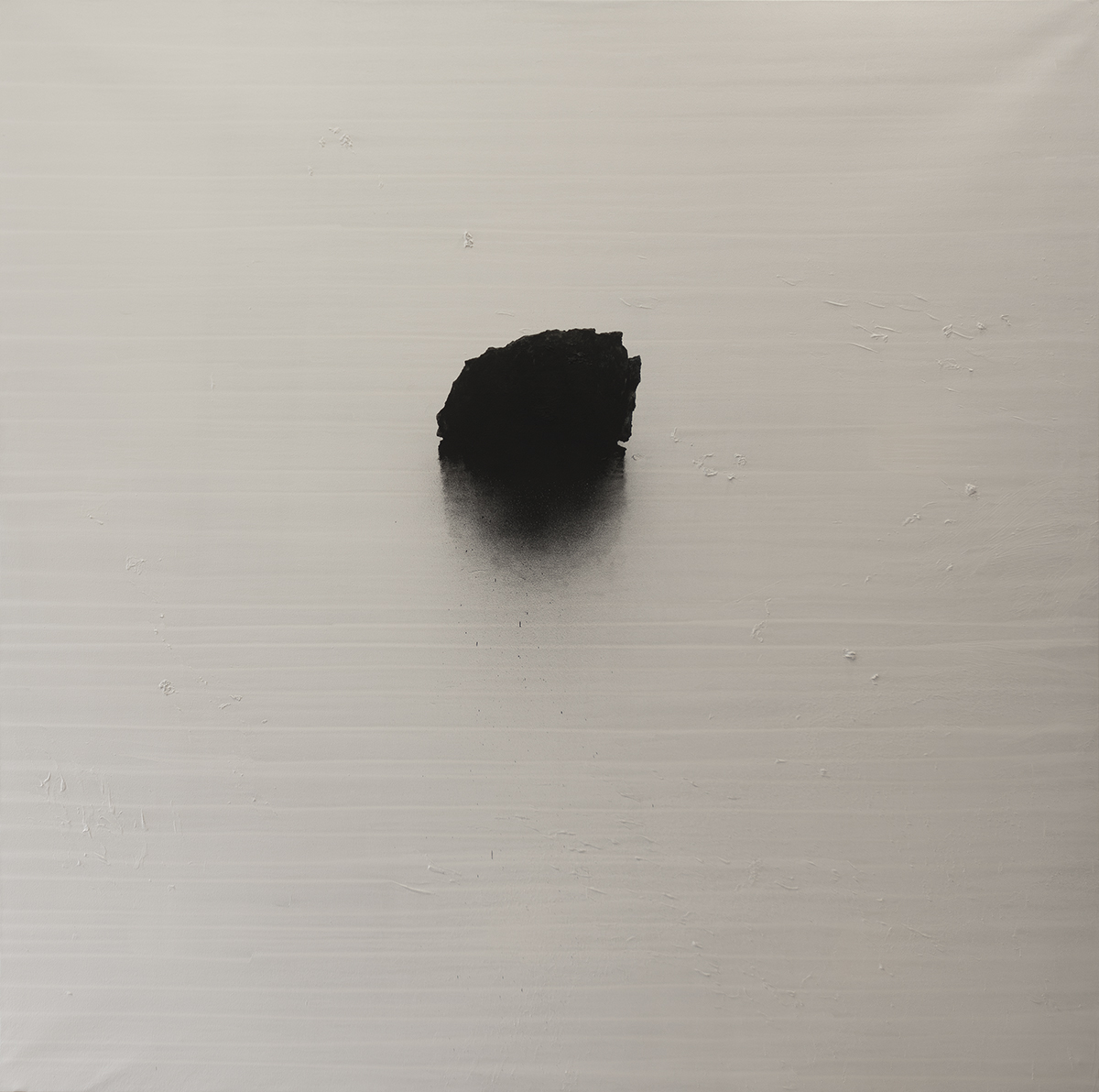Hugo Fontela
(Grado, Asturias, 1986)
Big White
2015-2018
mixed media on canvas
250 x 250 cm
Inv. no. 557242
BBVA Collection Spain
Fontela’s work is the result of a carefully studied dialogue with images that interest him or that have an impact on his surrounding environs. His analytical gaze and his engagement with the painterly process mark the time which the artist dedicates to each individual theme, relishing in the process until he judges it to be concluded. In all his work there are two large underlying concerns, namely the landscape and his love for painting.
The artist’s style is predicated on a high degree of , in which he adds layers and textures to build up a particular painterly geography. In this canvas, Big White Painting, the image of an island in the middle of the sea loses ground in the painting to the large white surface that surrounds it, making the piece almost abstract, reminiscent in ways of artists like Robert Ryman (1930). In this work, the image of the island, which obsessed the painter during this period, calmly emerges from the water that reflects the light and turns it into a timeless image.
This large powerful painting relentlessly draws the beholder into it.
The artist’s style is predicated on a high degree of , in which he adds layers and textures to build up a particular painterly geography. In this canvas, Big White Painting, the image of an island in the middle of the sea loses ground in the painting to the large white surface that surrounds it, making the piece almost abstract, reminiscent in ways of artists like Robert Ryman (1930). In this work, the image of the island, which obsessed the painter during this period, calmly emerges from the water that reflects the light and turns it into a timeless image.
This large powerful painting relentlessly draws the beholder into it.












